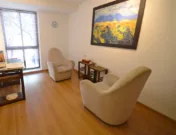Gestalt therapy was born in the 1950s with ideas that were groundbreaking at the time and still are today. It was a psychotherapy that sought the origin and solution of psychological problems not in the person themselves, but in the relationship between the person and their environment. It gave meaning to the body, to what we feel, to how we move.
In the 1920s of the 21st century in which we find ourselves, we can proudly say that Gestalt therapy is developing these ideas and deepening their nuances, possibilities and forms of therapeutic intervention. One example of this is the current developments in Gestalt-oriented psychopathology, which is based on field theory.
Developmental Somatic Psychotherapy (DSP) is another example of the expansion of Gestalt therapy theory and practice in the 21st century. Developed by New York Gestalt psychotherapist Ruella Frank, DSP is the application of the fundamentals of Gestalt therapy to the understanding of body movement.
In contrast to other forms of body psychotherapy, such as bioenergetics or Reichian therapy, DSP does not describe characterological body schemata and does not work with the idea of “muscular armor”. These ideas, as interesting as they may be, have a static nature that hardly fits with Gestalt concepts such as process, temporality or contact.
However, DSP does not work with the body as something static, but with physical movement. It is concerned with how our bodies move in relation to our environment: how we give ourselves what sustains us, how we push things and others to differentiate ourselves from them, how we reach into the environment to find what we need, how we grasp what we need and bring it to us, and how we let things and relationships go.
DSP tells us about the qualities of our movements that are reflected in our actions and deeds: intense, gentle, abrupt, continuous, uneven, … It also tells us how we feel the movements and how we resonate with the movements of others. How do I experience an environment that moves abruptly and with great intensity? And another that moves evenly and with low intensity? How does my body react to other bodies? What is my rhythm before the rhythm of others, my environment?
For psychotherapists, DSP offers a new vocabulary and new perceptions that sensitize us to the movements of our patients and ourselves, to the resonances, to the possibilities that unfold and those that do not manifest, to the supports that are accepted and those that are not. Learning DSP is like taking a course in painting and color theory, walking into a museum and noticing the paintings with details you have never seen before. Our senses are sharpened, we perceive more accurately and we can begin to look at therapy in terms of movement. Language itself acquires a sense of movement. How do my patient and I move and make contact through the language we use? Which dance do we perform? In Terapiados Formación we offer a varied training in DSP for therapists, from introductory workshops to complete training. We count on Helena Kallner, Swedish Gestalt psychotherapist, specialized trainer in DSP and one of the few persons who offer the complete training in person.
We invite you to subscribe to our newsletter and find out about our program.










